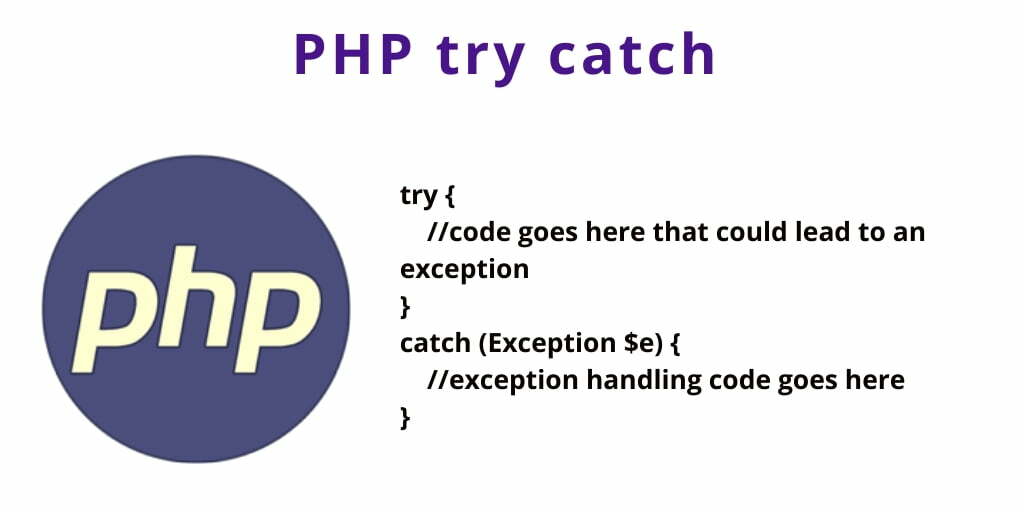In PHP, try-catch blocks are used to handle exceptions that may occur during the execution of a block of code. Exception handling is a crucial aspect of modern programming languages, as it allows developers to gracefully handle errors and prevent application crashes. In this article, you will learn how to use of try-catch blocks in PHP with examples.
PHP Try Catch & Error Handling
- Syntax of try-catch block in PHP
- Example 1: Catching a Division by Zero Exception
- Example 2: Catching a File Not Found Exception
- Example 3: Catching Multiple Exceptions
Syntax of try-catch block in PHP
The try-catch block in PHP has the following syntax:
phpCopy codetry {
//code that may cause an exception
}
catch(Exception $e) {
//code to handle the exception
}
In the above syntax, the try block contains the code that may throw an exception. If an exception is thrown, the catch block catches the exception and handles it. The catch block contains the code to handle the exception.
Example 1: Catching a Division by Zero Exception
The following example demonstrates how to catch a division by zero exception using a try-catch block:
<?php
try {
$result = 10 / 0;
}
catch(Exception $e) {
echo "Error: " . $e->getMessage();
}
?>
Output: Error: Division by zero
In the above code, you attempt to divide the number 10 by zero, which is not allowed in PHP and will throw an exception. The catch block catches the exception and displays an error message using the getMessage() method of the Exception object.
Example 2: Catching a File Not Found Exception
The following example demonstrates how to catch a file not found exception using a try-catch block:
<?php
try {
$file = fopen("non-existent-file.txt", "r");
}
catch(Exception $e) {
echo "Error: " . $e->getMessage();
}
?>
Output: Error: fopen(non-existent-file.txt): failed to open stream: No such file or directory
In the above code, you attempt to open a non-existent file using the fopen() function, which will throw a file not found exception. The catch block catches the exception and displays an error message using the getMessage() method of the Exception object.
Example 3: Catching Multiple Exceptions
PHP allows us to catch multiple exceptions using multiple catch blocks. The following example demonstrates how to catch multiple exceptions using a try-catch block:
<?php
try {
//code that may cause an exception
}
catch(DivisionByZeroError $e) {
//code to handle a division by zero exception
}
catch(FileNotFoundException $e) {
//code to handle a file not found exception
}
catch(Exception $e) {
//code to handle any other exception
}
?>
In the above code, you have three catch blocks to handle different types of exceptions. If a division by zero exception is thrown, the first catch block will handle it. If a file not found exception is thrown, the second catch block will handle it. If any other type of exception is thrown, the third catch block will handle it.
Conclusion
In this article, you have learned how to use of try-catch blocks in PHP with examples. You have seen how to catch exceptions that may occur during the execution of a block of code and how to handle them gracefully. By using try-catch blocks in your PHP code, you can ensure that your application remains stable and does not crash due to unexpected errors.
